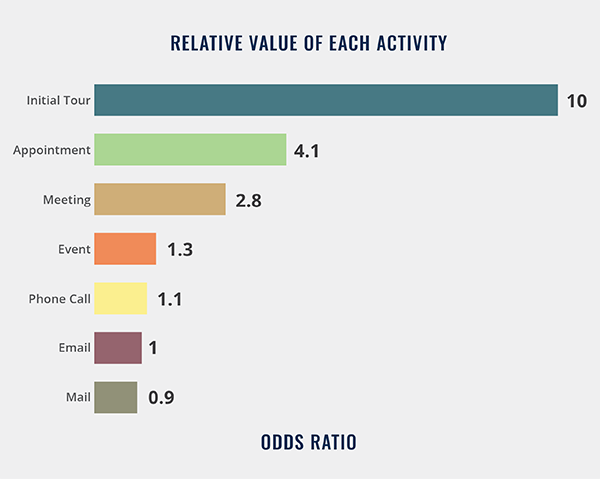Over the past two decades, the senior living industry has witnessed remarkable changes driven by technology and data. From improving operations to enhancing resident care, these advancements have transformed the way we serve aging populations. Today, artificial intelligence (AI) presents an even greater opportunity to reshape the future of aging services.
AI isn’t just another technological trend; it is a transformative force that has the potential to improve every aspect of retirement living—from resident experience and wellness to sales, marketing, and operations. But achieving this transformation requires a clear, strategic approach.
Varsity and the data scientists at Pavone Group’s data and analytics firm, WildFig, have watched this digital transformation unfold and have tracked the rise of AI over the past few years. Together, we’ve partnered with clients to embrace this innovation, helping them leverage AI to enhance decision-making and drive operational efficiency.
Here’s a closer look at how the process we use to make that happen:
THE AI ROADMAP: A PROVEN PROCESS FOR TRANSFORMATION
Before an organization or community can truly embrace AI, we first need to develop a roadmap that aligns with their mission and strategic goals.
- ENGAGE LEADERSHIP THROUGH INTERVIEWS – We start by sitting down with your executive team to uncover key challenges, opportunities, and goals. AI is not a one-size-fits-all solution; understanding your organization’s unique needs ensures that AI initiatives are both practical and impactful.
- MAP WORK PROCESSES – Using the insights from leadership, we map out workflows across departments. By identifying inefficiencies and opportunities for automation or enhancement, we lay the groundwork for targeted AI applications.
- IDENTIFY PILOT PROJECTS – Pilots are critical for demonstrating quick wins and building organizational buy-in. Whether it’s optimizing sales pipelines, improving operational efficiency, or personalizing resident engagement, we help you select and implement high-impact pilot projects.
- GUIDE STRATEGIC TRANSFORMATION – With the success of pilot projects, we support your organization in scaling AI initiatives across departments. The result? A cohesive, AI-enabled operation that enhances resident satisfaction, improves employee productivity, and drives overall organizational success.
WHY NOW?
AI is no longer a future concept—it is already transforming industries worldwide. For senior living, the stakes are high. Aging populations are growing, expectations for personalized services are increasing, and competition is fiercer than ever. Organizations that embrace AI now will be positioned as leaders, delivering unmatched resident experiences while optimizing their operations for long-term success.
TAKE THE FIRST STEP TOWARD AI TRANSFORMATION
Embracing AI is a continuous evolution that calls for thoughtful planning, clear priorities, and a commitment to change. With the right guidance and strategies, your organization can unlock its full potential, transforming the way you serve and support your community.

